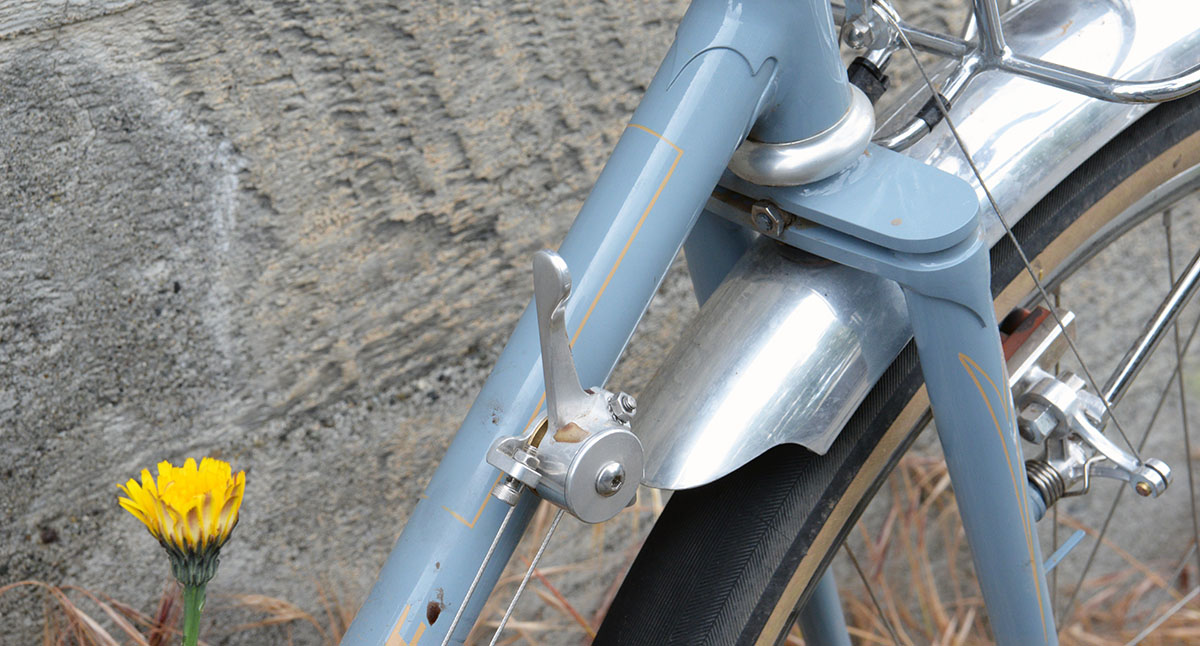A Rene Herse for the Outback
Last week, Lael Wilcox and I rode the Oregon Outback, the 364 mile (585 km) gravel route across the length of Oregon. It was an adventure, full of beauty and challenge.
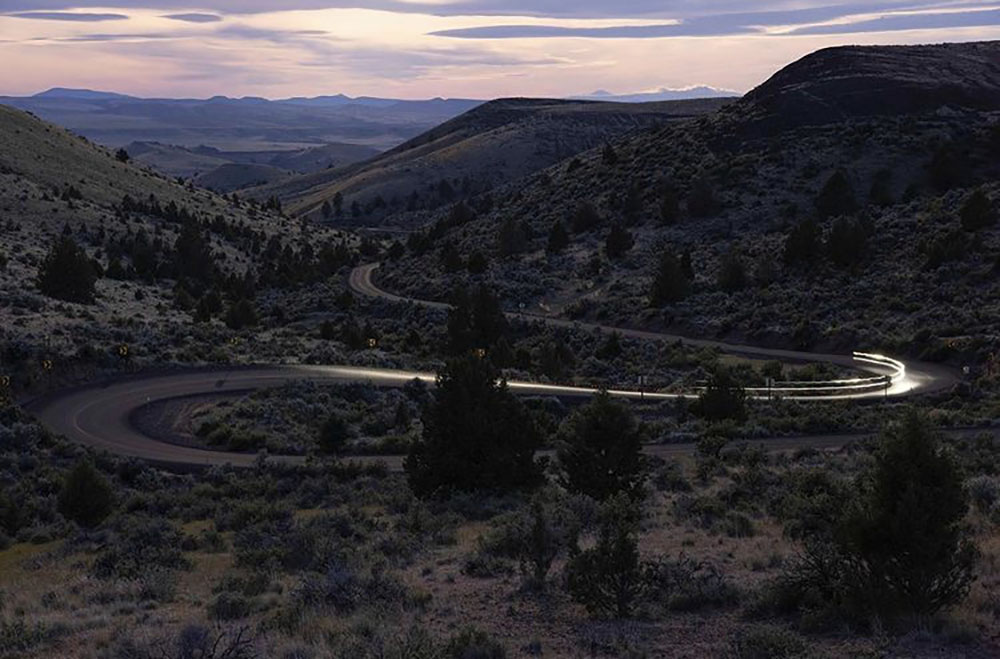
Starting the ride with Lael as the full moon (with a partial eclipse) was to our side, then seeing the eastern horizon light up orange with the rising sun… Having birds track us during the early miles on the bumpy OC & E Trail… The Crooked River Canyon and the aid station set up by a reader (Thank you, and sorry I didn’t realize you were there for us until I had passed!)… Climbing Antelope Hill just before the second sunrise of the ride (above)… They’re all wonderful emotions, and the challenge of the rough terrain made the impressions even more vivid.
Rue Kaladyte recorded our ride in photos and video, but I have only seen a handful of images. To document the experience without diluting it, she works so inconspicuously that I only caught a few glimpses of her – racing along on a gravel road paralleling the trail on her e-bike to find the perfect shot; at the store in Silver Lake, where she shot my bike outside while I bought food; and passing in her rental truck a few times, careful not to kick up dust. I look forward to the photos, especially since I have no idea where she photographed us.
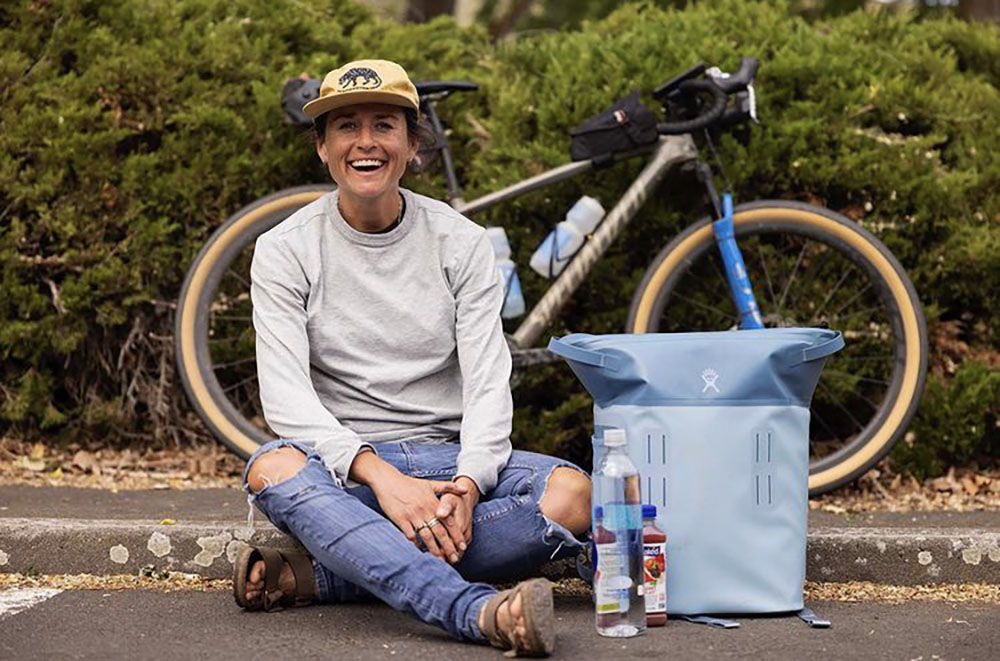
Lael finished the ride in the second-fastest time ever – 27:58 hours. Above she’s at the finish, still smiling. I was 50 minutes behind, and I don’t think I looked as fresh as she did! We didn’t ride together much, as our speeds varied depending on the terrain. We finally lost touch when a very sharp rock cut the sidewall of my front tire. (That’s the first time I’ve cut a sidewall, and a tire boot got me back on the road quickly.) We both had GPS problems—it wasn’t exactly a smooth ride!
A lot of people have asked about my new bike for the Oregon Outback. It’s the bike I dreamt of when I rode the first Outback in 2014 – an all-road bike pushed to the extremes for the rough and loose gravel of eastern Oregon. On this week’s ride over the 364-mile course, it formed an interesting contrast with Lael’s bike. Her Specialized is a mountain bike with drop bars. There were a few common threads: We both ran SON generator hubs and Edelux II headlights – the shaped beam of the lights is essential for making good progress in the night. We both used the same tires – Rene Herse Extralights – but Lael’s were 29er Antelope Hills (named after the last big climb of the Outback) while mine are 26″ Rat Trap Pass. That’s already where the similarities end. You could say that we approached the Outback from opposite sides – mountain and road biking – and met in the middle. And perhaps the Oregon Outback is the intersection where both types of bike can play out their strengths. For a multi-week epic, like the Tour Divide, I’d probably want the mountain bike’s more upright position and front suspension with more travel than my Kaisei ‘TOEI Special’ fork blades. The slender steel blades take the edge off medium-sized bumps, but not big hits that Lael’s 100 mm air-shocks can absorb.
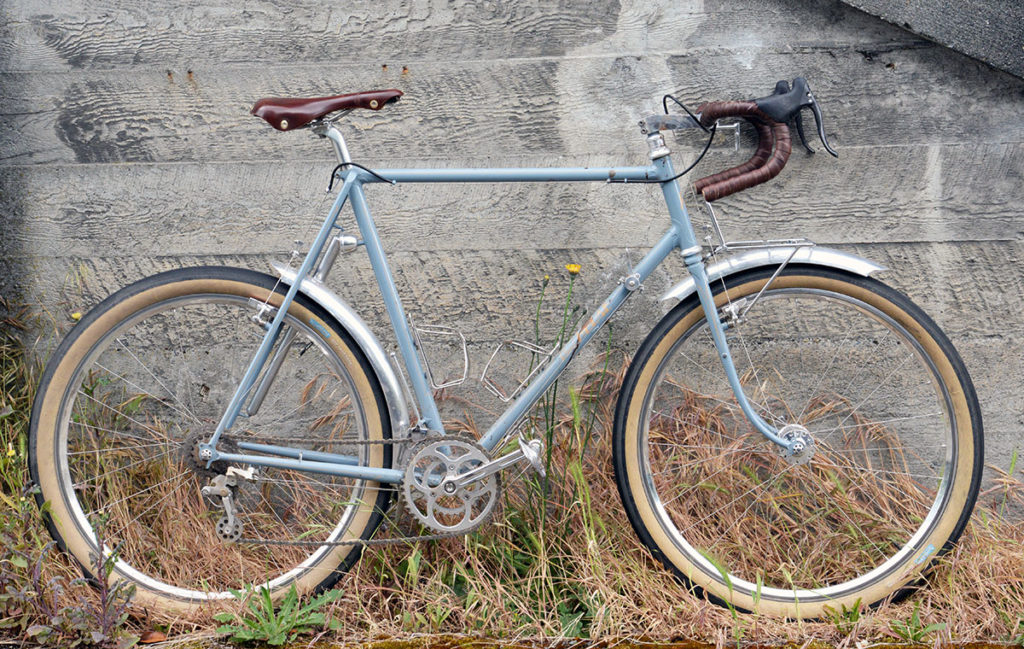
My bike’s frame was built from a ‘Superlight’ Kaisei tubeset by Mark Nobilette, with a standard low-trail geometry. That may sound easy, yet squeezing 54 mm tires between standard road cranks and beefy chainstays takes some real skill.
Mark Nobilette is a master of his craft, and the bike rode exactly as I imagined (and hoped): Stable on the long straights near Fort Rock. Nimble on the twisty night-time descents of the Ochoco Mountains, where you can’t see what’s around the next turn. And eager to climb the long grade of Antelope Hill after 23 hours on the road.
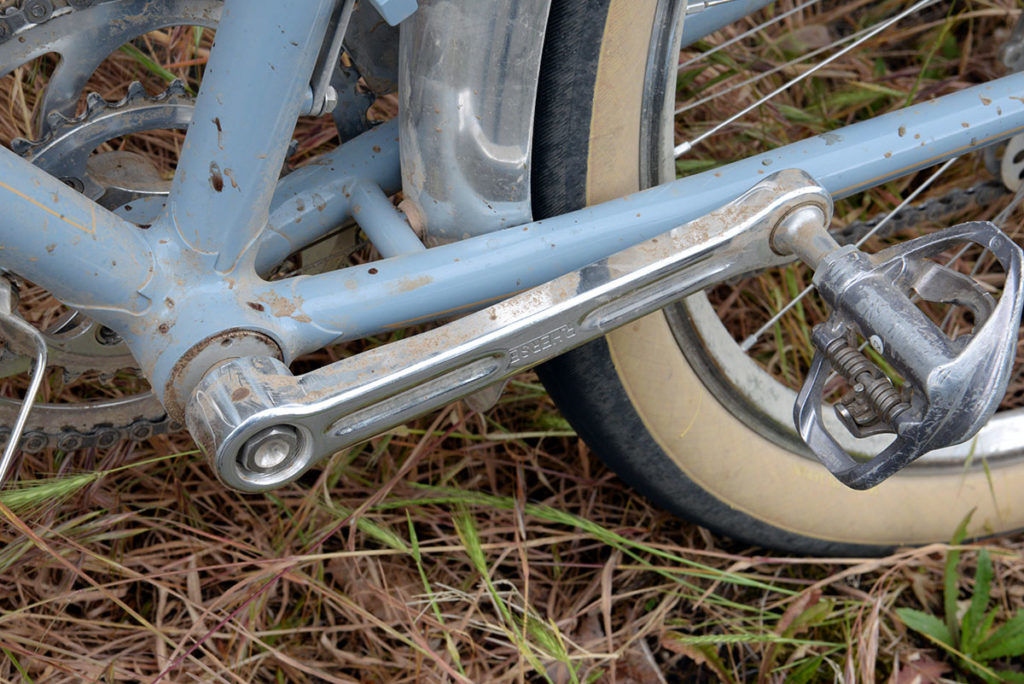
The paint is by Peter Weigle – it’s incredibly thin to bring out all the crisp detail of Mark’s lugwork. And yet it survived the rough 364 miles (585 km) without a scratch. The lining and lettering is by our friend and hot rod artist, Donn Threthewey. Working with such wonderful craftspeople makes the bike special, and feeling their presence when I’m out there riding at night makes me smile.
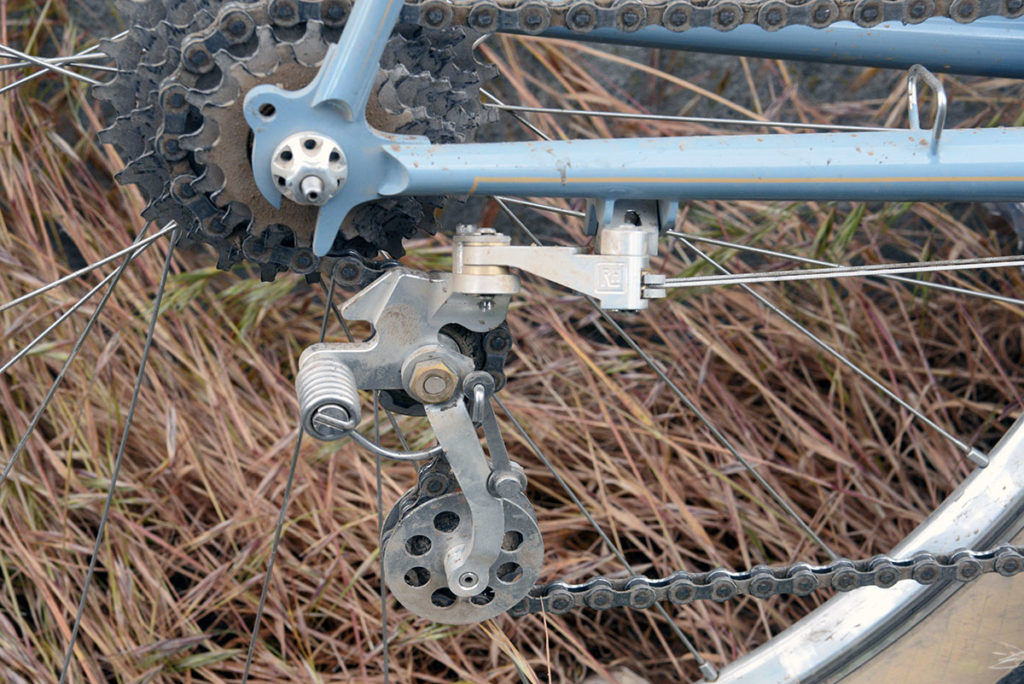
For the new bike, I went with our Rene Herse Nivex rear derailleur. I appreciated the fast and positive shifts on the rough roads, and the consistency that made shifting even in the middle of the night simple and fool-proof. Plus, with no cable housing and desmodromic operation, it’s impervious to dirt and dust. (Lael used SRAM eTap electronic shifting that shares the same benefits of push/pull operation and no cables that can clog up with dirt.) The new Nivex is now production-ready, but it was good to ‘vibration-test’ it one more time. (It passed…)
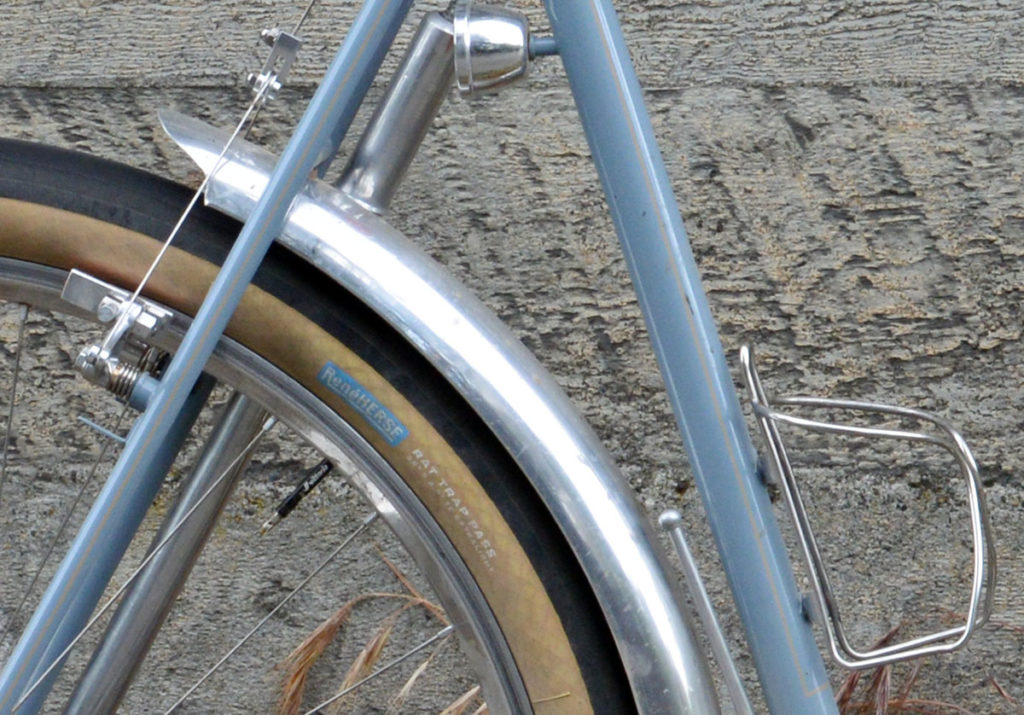
The gravel roads of southeastern Oregon are made of pumice that came from the eruption of Crater Lake 6700 years ago. It’s light and loose material, and the bike sinks deep into this surface. It feels like those gravel traps that are designed to stop runaway trucks on long highway descents…
My new bike approaches this problem from two sides: Wide 54 mm Rat Trap Pass tires provide extra floatation. And the bike is as light as possible, so it sinks less deep into the gravel. (Total weight, with generator hub, lights, rack, pedals, bottle cages, fenders, etc., is 10.3 kg / 22.7 lb.)
The big tires and the quest for light weight also led to the choice of brakes: Rene Herse cantis are among the lightest brakes anywhere. I enjoy the benefits of disc brakes under certain conditions (mostly wet and muddy), but for the Outback I didn’t want a stiff fork that’s necessary with disc brakes. Set up well, the cantis offer plenty of braking power (more than many discs) and excellent modulation. (Lael’s bike uses a suspension fork to provide shock absorption with disc brakes.)
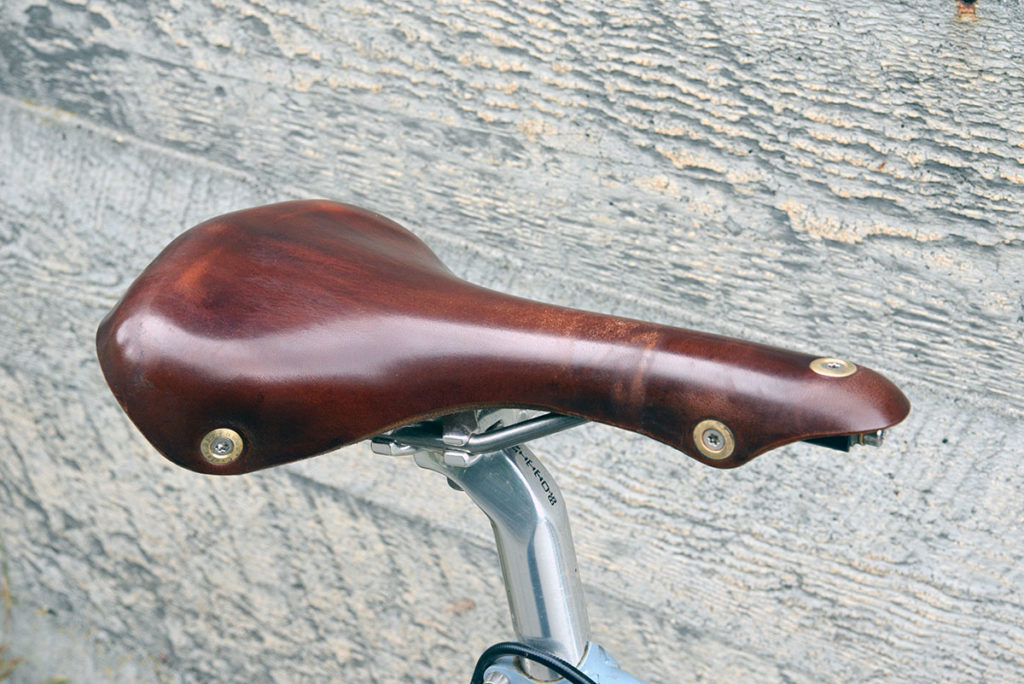
Of course, light weight shouldn’t come at the expense of comfort for a ride this long – the Berthoud Galibier saddle with its cut-away leather upper and titanium rails provided both. Hand comfort is perhaps even more important than seat comfort for me: The shape of the Rene Herse Randonneur handlebars has evolved through decades of riding long distances. They worked really well on the rough gravel of Oregon – just as they do on the long paved miles of Paris-Brest-Paris. I was glad that I had no pains or problems at any of the contact points – saddle, handlebars or pedals. My core, back and arm muscles are sore from the rough roads, but that seems almost unavoidable.
Oh, and you wonder about the bob-tailed fenders? They are for aerodynamics – our wind tunnel tests have shown that shielding the front of the tire tread – which moves at twice the speed of the bike – provides about the same benefit as a set of aero wheels. (Racing motorbikes have short fenders for the same reason, but the UCI doesn’t allow fairings for racing bicycles.) Ever since we spent three days in the wind tunnel, I’ve wanted to make some fenders to reduce my bike’s wind resistance. With the Oregon Outback known for its vicious winds, it made sense.
Did the new bike work as expected? The wide tires definitely helped with speed and control – there was no fish-tailing even on the loosest gravel. The aerodynamics are harder to measure, but the bike felt fast on the paved sections. And I finished the ride more than an hour faster than in 2014. So I’m really happy!
The bike is more than just a one-trick pony for the Oregon Outback, of course. It’s got a set of full-coverage fenders for all-weather duty, a custom low-rider rack to carry a camping load, and with fenders removed and the tires swapped for knobby Humptulips Ridges, it’s ready for the roughest roads of the Cascade Mountains. There’s a lot to this bike and how to prepare it for the long and punishing ride across Oregon. The full story with a studio photo shoot will be in a future edition of Bicycle Quarterly.
Update September 2021: After the mishaps of this attempt at the Oregon Outback, I went back in September. This time, everything worked out perfectly, and I managed to improve my time and set an FKT (Fastest Known Time) of 26:13 hours. You can read about that ride here.
Photo credits: Rugile Kaladyte (Photos 2 and 3)


